During the 138 years since the Liberation from Ottoman Rule, the Sofia Municipality was governed by 56 mayors
They were either elected or appointed, in accordance with the urban municipality acts and regulations, effective at the respective time. The mayors of Sofia headed the municipal governments (councils or administrations) and put into effect their decisions, as well as those of certain governmental bodies, regarding the development and urbanization of the city and the public works carried out therein through the years. Along with that they took part in resolving numerous issues and problems in the lives of the residents of Sofia, starting from their birth and until the end of their time on Earth. The contribution of each of those mayors was closely linked to the social and political conditions in Bulgaria, the duration of their time in office, and last but not least – to their managerial skills and individual qualities. Most of Sofia’s mayors are better known for their occupations, before or after their time in Mayor’s office. Many of them were ministers, Members of Parliament, diplomates, military leaders, industrialists, bankers, doctors, engineers, scholars, publicists etc. Four of them — D. Petkov, T. Zhivkov, St. Sofiyanski and Boyko Borisov were also heads of the Bulgarian government during different periods of time. Irrespective of the varied assessments of their activities as Mayors, all of them form parts of the 138-year history of Sofia since the Bulgarian Liberation and until now. Some of them contributed greatly to Sofia’s prosperity, achieved under their governance, and others, including D. Petkov, General V. Vazov and Eng. I. Ivanov can be considered true builders of modern Sofia.
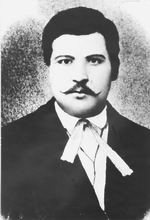
MANOLAKI TASHEV
(10 February, 1878 — 8 May, 1878)
The first mayor of Sofia after the Liberation was appointed Chairman of the Sofia City Management Council by Sofia’s Governor – Peter V. Alabin. M. Tashev’s sudden death put an end to his mayoralty merely three months after his appointment. Nevertheless, certain urgent development issues of post-liberation Sofia were solved during his time in office. The city streets and squares were cleaned of the waste, that had been accumulating for years, and which was removed outside the city borders. Street lighting was restored and new gas-fuelled lamps were ordered. New borders of Sofia were determined. An urban sanitary commission was established, as well as a fire-fighting service. The first public garden was opened – now – the City Garden. A technical service at the Sofia Municipality was established, to be headed by the Czech architect A. Kolar, for the purpose of commencing the preparation of Sofia’s first zoning plan.
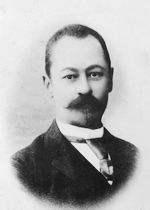
DIMITAR HADZHIKOTSEV
(9 June, 1878 — 1 August, 1878) (28 December, 1883 — 9 May, 1884)
Two times chairman of the Sofia City Management Council. During his first term of office, new gas lamps were ordered from abroad for the streets of Sofia, a mandatory participation of representatives of the guilds in the fire-fighting service was introduced, the members of the school council were appointed, etc. His second mayoralty was the result of the early removal of his predecessor on that position and Mr. Hadzhikotsev’s temporary, four-month appointment as acting head of the Sofia Municipality. No significant development activities took place in Sofia during that time.
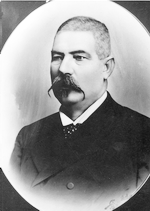
DIMITAR DIMOV
(2 August, 1878 — 29 December, 1878)
During his time as Sofia’s mayor the city was divided into districts. Dozens of ramshackle Turkish houses were demolished, and some of the streets of Sofia were repaired. For hygienic reasons, the horse- and cattle-markets were moved outside the city borders. A new plot was allocated for a cemetery – eastwards, near Tsarigradsko Shose. The Municipal Council sent a circular letter to all municipalities in Bulgaria, asking them for support in the attempts to raise funds for building a monument of Vasil Levski, at the place where he was hanged. The Capital Public Library was established, according to Governor Alabin’s suggestion. Streets were named after two foreign consuls in Sofia, prior to the Liberation— the French consul Léandre le Gay and the Italian consul Vitto Positano, for their services to the city and its residents.
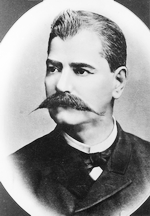
TODOR PESHOV
(30 December, 1878 — 13 September, 1879) (10 May, 1884 — 24 August, 1885)
The construction of the Monument of Vasil Levski started during his first term of office. He opened the first hospital in Sofia in the refurbished building of a former Turkish warehouse. 300 gas lamps were ordered from Vienna for improvement of the street lighting. The Boys’ High School of Sofia was opened in the building of the “Iv. Denkoglu" municipal school, near the St. Nedelya Church (7 January 1879). A theatre was opened in Sofia, after the request of the Serbian Gavril Yovanovic. The pharmacists were required to give night duties, in order to serve those in need of medications. The Municipal Council adopted measures for the official welcoming of the first Bulgarian prince (knyaz)— Alexander of Battenberg, and for seeing off Emperor’s Commissioner – prince Dondukov-Korsakov. For his departure, the latter was awarded the title Honorary Citizen of Sofia (June 1879). T. Peshov’s second mayoralty is notable for the commencement of the expansion and development of the Nursery-Garden (Boris’ Garden). One of the water reservoirs near the village of Boyana was also constructed at that time, as well as a part of the water mains from that reservoir to the city etc.
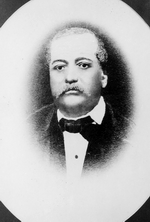
DIMITAR TRAYKOVICH
(14 September, 1879 — 30 June, 1880)
The Municipal Council adopted the First Zoning Plan of Sofia (16 January, 1880), which became the main guideline for the future development of the capital city. An urban development commission was set up, consisting of Council members, the city engineer and the city doctor, as that commission was in charge of street repairs and lighting, as well as of the construction of the sewerage system. The first Girl’s school was opened (17 September 1879).
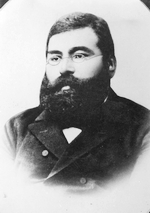
TODOR IKONOMOV
(1 July, 1880 — 30 December, 1880)
During T. Ikonomov’s time as Mayor, the Sofia Municipality introduced an annual budget for the first time. Sofia’s Urban Development Plan was completed. The construction of the Classical Boys’ Secondary School started at the crossing of the “Moskvoska” and “Dunav” streets. The municipal local government became subordinate to the Ministry of Interior.
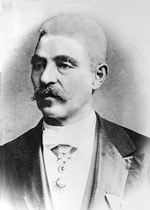
NIKOLA DASKALOV
(15 February, 1881 — 30, September 1881) (2 November, 1887— 31 August, 1888)
He was elected twice head of the Capital municipal local government. There are no evidences of any significant activities during his first term of office. During N. Daskalov’s second mayoralty commenced the development of the “Three Wells" (Yuchbunar) district, in accordance with Sofia’s First Zoning Plan. “Vasil Levski”, “Gurko”, “Parchevich” and other streets were regulated. A number of real estate properties were expropriated in order to ensure the extension of the “Vitosha” and “Maria-Luisa” boulevards. The Sofia Municipality established an army transport unit of 40 cars, based on the prescription of the Ministry of War.
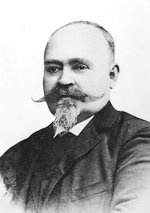
IVAN HADZHIENOV
(1 October, 1881 — 29 April, 1883)
Under the leadership of Mr. Hadzhienov, the Sofia municipal local government made active efforts for the implementation of the development plan and for the general improvement of the public environment in the city. New streets and squares were construed and new regulation effected for others. Water catchment facilities were constructed at three springs near the Village of Boyana and the existing water mains of the city, bringing water from the Vitosha Mountain to Sofia were replaced. In 1882 started the construction of the “Nursery-Garden" — the future Knyaz Boris’ Garden. Eleven thousand saplings were purchased with Mr. Hadzhienov’s involvement, and he personally supervised their planting and development. In order to provide funding for the urban development activities, Sofia was divided into four financial sections, and the taxes on the alcoholic beverages, measures and weights and the right of passage were increased. Mayor Hadzhienov also signed the first long-term loan agreement for 850 thousand levs.
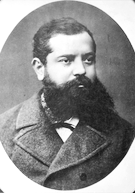
NIKOLA SUKNAROV
(30 April, 1883 — 27 December, 1883)
Occupied the Mayor’s position for approximately 7 months, without any notable activities during that time.
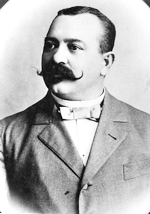
IVAN SLAVEYKOV
(25 August, 1885 — 19 October, 1886)
His term as the mayor of Sofia was mainly marked by the war between Serbia and Bulgaria (1885), and the need to attend the army units, passing through Sofia on their way to the western border.
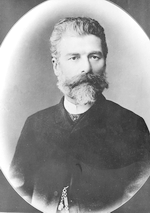
YOSIF KOVACHEV
(20 October, 1886— 1 November, 1887)
Y. Kovachev is better known for his educational activities prior to the Liberation, and during his mayoralty significant efforts were put into the regulation of certain streets of Sofia, according to the First Zoning Plan.
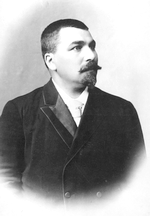
DIMITAR PETKOV
(1 September, 1888 — 7 October, 1893)
Due to his initiative and energetic actions, during his more than 5 years in office, Sofia started to gain the appearance and characteristics of a modern European city. During that period, the capital city was divided into 5 administrative districts. Its development boundaries were extended. The municipal services were re-organized and their activities were regulated by the newly established rules. Certain real estate properties were expropriated and some buildings were demolished, in order to implement Sofia’s urban development plan. A major part of the currently existing central city squares, boulevards and streets were constructed at that time, as well as the Lions’ (1889) and Eagles’ (1891) bridges. The old water mains were replaced by modern, cast-iron pipes, ordered from abroad. The Central Sofia Cemetery was established at its current place and rules for burial services were put in place. The City Garden was expanded. A competition was announced for the construction of Municipal Mineral Baths and the building for a new municipal home. Investigations took place for the implementation of electric street lighting, electric trams and the construction of modern sewage system in Sofia. D. Petkov personally supported the completion of the Monument of Vasil Levski that had been going on for years. In order to ensure the successful implementation of the numerous urban development activities, he concluded a municipal loan with the Bank of London, for a total of 10 million levs. Part of the projects, designed or commenced during his time in office, were implemented in later years.
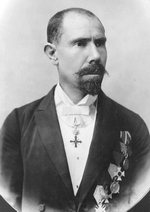
HRISTO BLAGOEV
(18 October, 1893 — 31, May 1894)
Separate water supply and sewage services were established. The investigation and preparatory work for the conclusion of concessions for the electrification of the city and the introduction of electric trams continued.
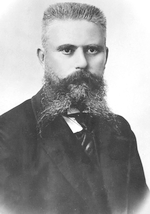
IVAN GROZEV
(16 July, 1894 — 15 July, 1895)
Vasil Levski’s fellow townsman and associate was the Mayor of Sofia Municipality for one year, while chairing the Sofia Chamber of Commerce and Industry at the same time. During his time in office continued a number of urban development works that started during D. Petkov’s term.
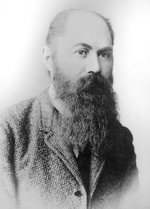
DIMITAR MOLLOV
(16 July, 1895 — 30 September, 1896)
The renowned Bulgarian doctor, public figure and scientist used his time in office to implement some of his ideas for improvement of Sofia’s sanitary organization. The Monument of Vasil Levski was unveiled with a major celebration (22 October, 1895).
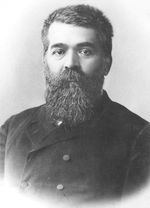
GRIGOR NACHOVICH
(1 October, 1896— 7 April, 1897)
He occupied the Mayor’s position only formally for about 6 months. During that period, the Sofia Municipal Council was managed by his assistant Dimitar Nozharov.
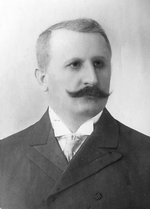
DIMITAR YABLANSKI
(8 April, 1897—11 April, 1899)
During his time as Mayor, an amendment to the Urban Municipalities Act was drafted and subsequently approved by the National Assembly in 1898. The Sofia Municipality’s budget was put in order by concluding and performing beneficial contracts and concessions, increasing the municipal revenues. Agreements were signed with a French company for the electrification of Sofia and with a Belgian company – for the implementation of the electric tram project. Adjustments to the riverbeds of the Perlovska and Vladayska Rivers started. Streets in the centre and the outskirts of the city were regulated.
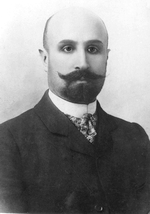
HRISTO POPOV
(12 April, 1899 — 4 January, 1901)
During his term of office electric lighting was introduced in Sofia (1 November, 1900) and the first tram started travelling along the streets (1 January, 1901). Sofia’s coat of arms was designed and approved (April 1900). H. Popov was part of the steering committee for the construction of the Monument of Alexander the Liberator. A city municipal hospital was opened and free medical aid for the poor citizens of Sofia was introduced.
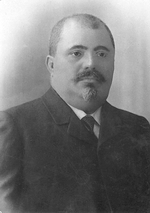
PETAR CHERNEV
(4 April, 1901 - 23 September, 1903)
After H. Popov, Sofia Municipality was briefly (for three months) governed by a three-member committee, and after that P. Chernev was elected mayor. During his mayoralty the tram line to Knyazhevo was opened (1 April, 1901) and other tram lines were extended. At that time started the construction of the Monument of Alexander the Liberator (23 April, 1901).
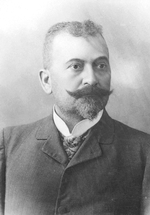
PETKO NIKOLOV
(2 March, 1904 — 7 July, 1905)
During that period, the Sofia Municipal Council, headed by the Mayor P. Nikolov made efforts to improve the water supply of the city. For that purpose, the a water-catchment was constructed, bringing the waters of the Vladaya River from a place 1800 m a.s.in the mountain to the reservoir near the Village of Boyana, through pipes. The second completion plans for the construction of the Sofia Mineral Bath.
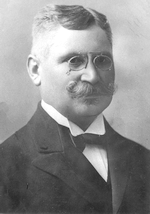
MARIN TODOROV
(8 July, 1905 — 21 March, 1908)
M. Todorov’s relatively longer period in office and his organizational qualities contributed to a fruitful construction and urban development activity of the Sofia Municipality. The new Boyana Water Mains (5 December 1907) was commissioned, which brought water to Sofia from the high parts of Vitosha. The water-supply network was extended, new adjustments to the Perlovska and Vladayska rivers were made, the tram lines were extended, the central boulevards and squares were paved with ceramic blocks, imported from Austria-Hungary. The construction of the small public bath at “Ekzarch Yosif” street was completed (1908), as well as a new branch of the fire-fighting service in the Three Wells district was established. The National Theatre (3 January, 1907) and the Maychin Dom (Mother’s Home) Hospital (19 December, 1907) opened doors. During that time started the construction of the Central Mineral Baths, the Market Hall (Hali), the City casino, 5 municipal schools, the premises of the fire-fighting service at “Rakovski” street. In order to implement these projects and repay existing debts, M. Todorov signed the second international loan agreement (after the one signed by D. Petkov) for 35 million levs. A number of other of his ideas could not be implemented, due to М. Todorov’s resignation as mayor after the central Government was changed.
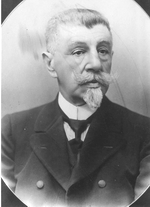
GEORGI SARAFOV
(22 March, 1908 — 31 March, 1908)
He was mayor for only one week.

ATANAS HRANOV
(1 April, 1908 — 31 July, 1908)
During the three months of his mayoralty there were no notable activities.
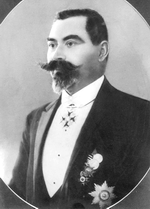
EVSTATI KIRKOV
(1 August, 1908 — 18 October, 1910)
In the beginning of 1910, he managed to sign the third external loan agreement of the Sofia Municipality for 15 million levs. This funding allowed the construction of 8 primary schools, 2 junior high schools, the Sofia Mineral Baths and the Market Hall. The municipal bakery, the pavilion in the lake in Boris’ Garden was also constructed. A part of the municipal common pasture was forested. At the peak of the multiple activities, undertaken during E. Kirkov’s term of office, he was forced to resign.
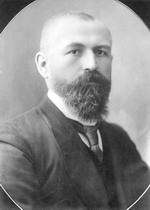
KONSTANTIN BATOLOV
(1 November, 1910 — 17 August, 1911) (6 September, 1920 — 8 June, 1922)
During his first mayoralty two of the primary schools under construction were finished, and the construction of eight new school buildings started. The former Cattle Market near the St. Nikola Church was transformed into a garden. Adjustments were made to the riverbeds of the two Sofia rivers - Perlovska and Vladayska. During K. Batolov’s second term of office a modern flower garden was designed and planted in the Boris’ Garden. Sofia’s right to use water from the Rila tributaries to the Iskar river were regulated, enabling the future construction of the Rila-Sofia water-supply line.
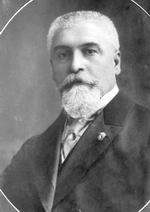
HARALAMPI KARASTOYANOV
(18 August, 1911 — 22 May, 1912)
On 18 August 1911, the governance of the Capital Municipality was assumed by a three-member committee, headed by N. Karastoyanov, and after the elections for municipal councillors on 27 September, he was elected mayor. During his relatively short mayoralty the Sofia brothels were closed and the construction of municipal schools continued. The Sofia and Parisian municipal councils exchanged visits, as the respective delegations were headed by the mayors of the cities.
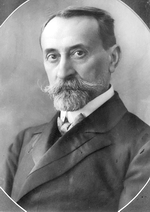
IVAN GESHOV
(23 May, 1912 - 11 February, 1914)
The Sofia Mineral Bath (13 May, 1913) was opened. The construction of 7 primary schools was completed. Two tram lines were extended. St. Alexander Nevski Square was paved. The Municipal Council made a decision to solve the residential issues in Sofia. Due to the commencement of the Balkan War in September 1912, most of the urban development works in the Sofia Municipality were suspended.
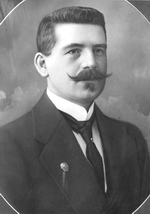
PETKO TODOROV
(12 February, 1914 — 18 March, 1915)
The construction of municipal homes for poor residents of Sofia started in the Three Wells District. The tram line along “Dondukov” Boulevard was transformed into a two-way line. The construction of one public school was completed.
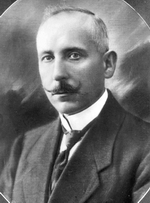
RADI RADEV
(18 March, 1915 — 11 August, 1918)
On 18 March 1915, the Capital City Municipal Council was dissolved and the governance of the city was assumed by a three-member committee, headed by Р. Radev. On 25 May in the same year he was elected mayor at a session of the municipal council. His term of office coincided with the years of World War I, when the functions of the municipal services were entirely directed towards serving the Sofia’s wartime needs. During that period, the lighting and trams were confiscated from the foreign companies and their management was taken over by Sofia Municipality.
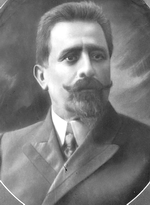
GEORGI KALINKOV
(12 August, 1918 — 5 September, 1920)
He was the Head of the Sofia Municipal Council during a very difficult period of time in the environment of a post-war crisis in Bulgaria, when the capital municipal services were disordered and prevented from carrying out their normal activities.
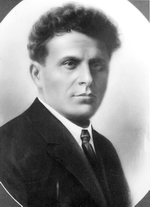
KRUM POPOV
(10 June, 1922 — 9 June, 1923)
After К. Batolov‘с second term of office К. Popov became mayor. His mayoralty is notable for the passing of a new law on the Sofia Municipality and the division of Sofia into 6 district mayoralities. The construction of the Boyana Power Station that has started earlier continued and the tram line along “Pirotska” boulevard was extended. Krum Popov died in the coup d'état of 9 June 1923.
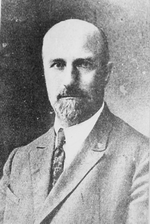
IVAN PLOSHTAKOV
(10 June, 1923 — 13 July, 1924)
After the coup d’état of 9 June, the governance of the capital was entrusted upon a seven-member committee. I. Ploshtakov, a municipal councillor of many years, headed the committee. Although he was not officially nominated as mayor of Sofia, he effectively occupied that position for almost one year and due to his activities during that time, I. Ploshtakov may be included in the list of the Mayors of Sofia.
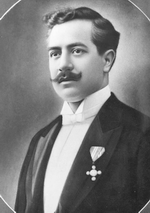
PASKAL PASKALEV
(14 July, 1924 — 16 April, 1925)
He contributed to the commencement of the construction of the Rila-Sofia water-supply line and the construction of a new section of the Sofia Slaughterhouse. He died of his wounds, after the terrorist attack in the St. Nedelya church.

GEORGI MADZHAROV
(10 June, 1925 — 13 November, 1925)
His mayoralty was tragically interrupted merely 5 months after he became mayor – he was killed by a municipal employee he has fired. During that time the tram lines to Knyazhevo and Poduyane were transformed into two-way lines, and some of the other lines were extended.
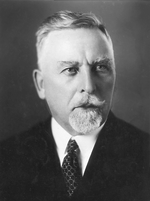
VLADIMIR VAZOV
(7 April, 1926 — 14 March, 1932)
V. Vazov’s election as mayor marked the beginning of a new stage in the development of Sofia Municipality. It is characterized by pragmatic management of the municipal services and improvement of their financial condition, which resulted in obvious results in all areas of life in the capital city. This was partly due to V. Vazov’s personal qualities — he was enterprising, dedicated, focused and had real organizational talent that had also made him a talented military leader during World War I. The implementation of the most ambitious efforts of the Sofia Municipality started during the 6 years of his time in office — the construction of the Rila - Sofia water-supply line, designed in the beginning of the 1920s and finally completed in 1933. Hydro-Power Plants were constructed near the Village of Kurilo (1927) and Simeonovo (1928). The street lighting of Sofia was significantly improved. 22 km of new tram lines were launched and 40 new motor units and cars were delivered. The compensation, owed by the Sofia Municipality to the Belgian company for the expropriation of the tram service during the war was settled. Most wooden bridges over the Perlovska and Vladayska Rivers were replaced by reinforced concrete structures. The Public Baths (1928) at the Central Mineral Bath and the district baths in the Three Wells District (1931) opened doors. A social care office was established to provide free-of-charge medical and other care for the extremely poor residents of Sofia. The Construction of a new slaughterhouse commenced. The City Library of the Sofia Municipality was opened, and the works started on a Municipal Museum and Archive (1928). An Honorary Sign of Sofia Municipality was established in 1929 to be awarded to Bulgarians and foreigners with special services to Sofia and its citizens. Between 14 March, 1932 and February 1933 Sofia Municipality was governed by a seven-member committee. By order of the Minister of Interior, Boyan Nachov was appointed Chairman of the Committee.
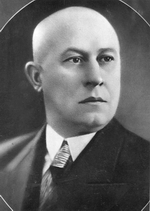
HARALAMPI OROSHAKOV
(20 February, 1933 — 24 June, 1934)
The Rila — Sofia water-supply line was commissioned during his time of office (23 April, 1933), as well as the new Sofia Slaughterhouse (31 December 1933).
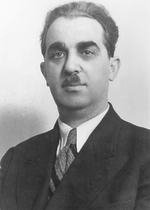
IVAN IVANOV
(25 May, 1934 - 9 September, 1944)
Eng. I. Ivanov was appointed Mayor of Sofia by royal decree No. 210 of 24 May 1934. He first became involved in the Sofia municipal services in 1919, when he was appointed Assistant Chief of the Water-Supply and Sewage Department. In the following years he surveyed and designed the Rila-Sofia water-supply line, and after 1925 he was the head of the Directorate in charge of the construction of the line, until it was completed in 1933. During his mayoralty the services of the Sofia Municipality were completely reorganized. New departments and rules for their operation were established. Well qualified and skilled specialists were appointed, greatly improving the previously existing bureaucratic and inefficient practice of the municipal clerks. One of Sofia Municipality’s greatest achievements during that period was the liquidation of all its financial liabilities, accumulated in the war and post-war years (1915-1918). In 1934 a new Ordinance-Law on the Development of the Capital City – Sofia was passed, contributing to the improvement of the urban development activities in Sofia. The Ordinance stipulated for the adoption of a new urban development plan of Sofia, in the spirit of the modern European urban planning trends. This resulted in the development and approval of the Musman Plan in 1938 which was not implemented, due to the start of the World War II. A new administrative territorial unit was established in 1938 — Large Capital Municipality, resulting from the incorporation of the neighbouring villages into the city of Sofia. Under the governance of Eng. I. Ivanov, Sofia Municipality carried out numerous improvements and innovations in the areas of water-supply, sewage, pavement, power supply, landscaping, cleaning of the city. The bus (26 April 1935) and trolley-bus transport (8 February, 1941) were introduced. As a result of Sofia Municipality’s overall activities in the period 1934-1944, except for the last years of World War II, Sofia achieved a high level of architectural, urban planning and public environment development. After 9 September, 1944 and until the effective date of the People’s Councils Act – 3 March 1948, Sofia Municipality was governed in accordance with the existing laws and ordinances, with some new content introduced therein.
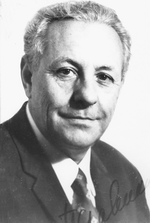
PETAR SLAVINSKI
(10 September, 1944 — 21 September, 1944)
He was appointed temporary Mayor of Sofia by verbal order of the Minister of Interior. He occupied that position for a very short time.
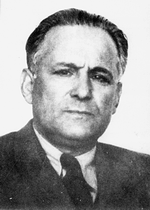
ALEXI KVARTIRNIKOV
(23 September, 1944 — 21 March, 1945)
During his short time in office, as a temporary mayor, significant efforts were made to clean the streets of Sofia from the debris of the buildings, destroyed by the bombings in the period 1943-1944. For that purpose was established the Directorate for Restoration of the Capital City.
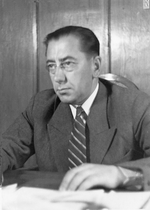
NIKOLA BRONZOV
(22 March, 1945 — 29 October, 1945)
He was appointed mayor in accordance with a new ordinance of the Council of Ministers for temporary municipal local governments. The cleaning of the city continued. The first extraordinary budget of the Municipality was adopted. The Beli Iskar Dam Lake was completed (14 October, 1945), the construction of which had begun during I. Ivanov’s mayoralty.
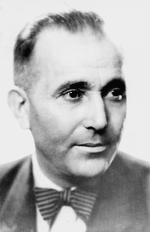
SLAVCHO STOILOV
(1 November, 1945 — 1 March, 1948)
The water-supply, sewage and power-supply networks, destroyed during the war, were restored. Streets, squares, public and private buildings, damaged by the bombings were repaired. A new urban development plan was approved for Sofia. Four municipal economic enterprises were established.
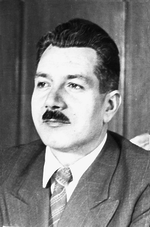
DOBRI BRADISTILOV
(2 March, 1948 — 27 May, 1949)
New rules for the establishment and structure of the local governmental bodies were introduced, in conformity with the Constitution of 1947. A temporary local government was appointed for the Sofia City People’s Council (SCPC) chaired by D. Bradistilov. During his time in office, the work to recover from the consequences of the war and for normalization of life in the capital city continued.
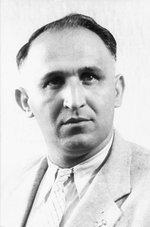
TODOR ZHIVKOV
(27 May, 1949 — 1 November, 1949)
The first elections for people’s councils in the People’s Republic of Bulgaria were held in May 1949. At a session of the Executive Committee (EC) of the SCPC on 27 May in the same year, T. Zhivkov was appointed its chairman for a 2-year term. The first 5-year plan for the development of Sofia was prepared in the 5 months, in which he occupied that position.

IVAN PASHOV
(2 November, 1949 — 14 December, 1952)
A plan for relieving the residential crisis in Sofia was developed. Public works were carried out in some of the remote neighbourhoods. School buildings were repaired and the construction of several new schools started. The number of tram cars and of the bus and trolley-bus lines increased.
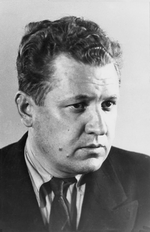
DIMITAR POPOV
(22 December, 1952 — 24 February, 1962)
At the end of 1952, D. Popov was appointed chairman of the EC of the SCPC for three consecutive terms of office. During that period of time, the public and administrative centre of Sofia was established and developed. Sofia was divided into 6 administrative districts by a new decree. The General Plan for the Reconstruction of Sofia and the Suburban Areas was approved. Sofia became member of the Global Federation of Municipal Cities.
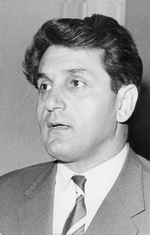
GEORGI PETKOV
(8 March, 1962 — 20 September, 1967)
The following facilities and plants were completed and opened in this period: Traycho Kostov Thermal Power Plant, Bread-Making Plant 2, Home Construction Plant, the First Household Goods Plant etc. Trolley-bus lines to the following districts were launched: Iztok, Geo Milev, Poduyane Station- Levski District, Hadzhi Dimitar –Medical Institute. The first preliminary studies for the future construction of Sofia Subway were conducted.
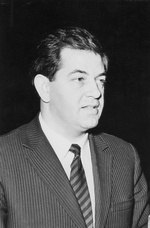
GEORGI STOILOV
(21 September, 1967— 11 November, 1971)
Unattended charging was introduced in the public transport network. Pedestrian underpasses were opened in the centre of Sofia and at Eagles, Bridge, as well as the Household Services Company at “Dondukov” Boulevard, the sports and tourism complex “Aleko”, Shatstlivetsa Hotel etc.

IVAN PANEV
(12 November, 1971 — 5 December, 1977)
The major construction works, finished in this period include: the new building of the Central Railway Station, the bridge/overhead road over “Lenin” Boulevard (now “Tsarigradsko Shose” Boulevard), Druzhba Bread-Making Plant, Malashevtsi Garage, the Soft Drinks Plant. The construction of the Moderno Predgradie (Modern Suburb) District (now – Lyulin) commenced. The technical design for the construction of the Sofia Subway was approved. An amendment to the artwork of Sofia’s coat-of-arms was introduced (1974).
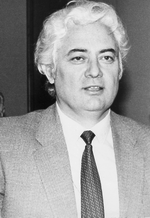
PETAR MEZHDURECHKI
(27 March, 1978 —19 June, 1986)
Re-elected for three consecutive terms of office as chairman of the EC of the SCPC, Capital Municipal People’s Council (SMPC), Capital People’s Council (CPC). Among the significant programmes adopted during that period are those for the residential construction development, for improvement of the state of healthcare, for protection of the environment, reconstruction of Sofia’s water-supply system etc. The EC of the SMPC adopted draft partial amendment to the General Urban Development Plan of Sofia. The boulevards “Stambolyiski”, “Dragan Tsankov”, “Botevgradsko Shose” and Sofia Ring Road were reconstructed. First steps were undertaken for the construction of an urban waste-water treatment plant. The 3rd of April was established as Sofia’s Day.
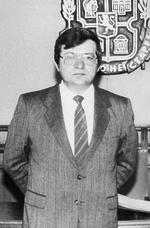
STEFAN NINOV
(20 June, 1986 — 27 July, 1990)
The construction of the Sofia metropolitan began in steps. The EC of the CPC developed a programme for the protection of the natural environment. Limits were set for the use of water by industrial companies in Sofia. A project was adopted for overall reconstruction of the “Botevgradsko Shose” boulevard and Poduyane-Pirdop Road Junction. Municipal companies were established and assigned with various activities in the area of construction, production, trade, transport, services.
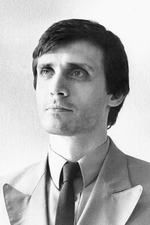
ALEXANDAR KARAKACHANOV
(17 October, 1990 — 20 October, 1991)
A temporary EC of the CPC was appointed. For the first time since 1948 it consisted of members of various parties. The chairman of the Green Party, Al. Karakachanov was elected Mayor. A Commission on the Names was established at the CPC. The original names of a number of streets, boulevards and squares in Sofia were restored or they received new names.
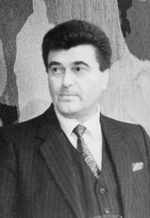
ALEXANDAR YANCHULEV
(21 October, 1991 — 16 November, 1995)
Elections for mayors and municipal councillors were held on 13 October 1991. For the first time in the history of Sofia Municipality, the mayor was appointed by direct voting. Sofia’s coat-of-arms was restored to its original look of 1900. Sofia’s flag was designed, incorporating the restored coat-of-arms. The 17th of September — the day, dedicated to the martyrs Faith, Hope and Love (Vyara, Nadezhda and Love) and their mother Sofia, was declared Sofia’s Day.
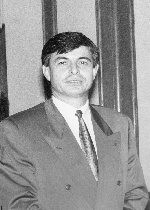
STEFAN SOFIYANSKI
(1995 – 2005)
First term of office – 1995 – 1999
Second term of office – 1999 -2004
Third term of office /incomplete/ 2004 – 2005
Stefan Sofiyanski was born in 1951 in Sofia. He holds a Bachelor’s degree in Economics. He worked as a research associate at the Centre of Electronization of Construction and the Construction Industry /CECCI/, and subsequently as a chairman of the Posts and Telecommunications Committee. In 1993-1994 he was deputy-chairman of the National Coordination Council of the Union of Democratic Forces. In 1995 he was elected member of the 37th parliament, and later – mayor of Sofia. During his term in office as Sofia’s mayor, for several months in 1997 he was the head of a Caretaker Government, until the holding of early parliamentary elections. During Stefan Sofiyanski’s term of office commenced the preparation of the General Development Plan of Sofia. Significant activities in the area of construction and architecture, public works and social and household needs of Sofia’s citizens, education and culture in the capital city were carried out. A number of boulevards and streets were refurbished and reconstructed, including “Hristo Botev” boulevard, “Slivnitsa” boulevard, “Al. Malinov” boulevard, “Acad. Iv. Geshov” boulevard, “Vitosha” boulevard, “Alabin” street, “Pirotska” street, etc. The square in front of the Central Railway Station was also repaired. The new central bus station in Sofia was opened. The first line of the Sofia Subway was commissioned between Lyulin District and the centre of Sofia. Together with the Japanese Ambassador in Sofia, the Mayor attended the groundbreaking ceremony for the section of the Sofia Subway between the “Yunak” stadium and Interpred. The potable water purification plant Bistritsa and the Iskar water-supply line were opened. The waste-water treatment plant in Kubratovo was rehabilitated. The landfill in Suhodol was finished and commissioned, German waste collection and transportation machinery was purchased. New Mercedes buses were procured for the needs of the public transport, and Volkswagen ambulances – for the needs of the Emergency Medical Centre. The Maria Luisa public swimming pool and beach were refurbished and renovated. Efforts were initiated for ensuring accessible environment for the disabled. The first elevator for disabled persons was constructed for the underpass at Eagles’ Bridge, sidewalks at street crossings were adapted for the needs of the disabled, along with ramps and elevators in the municipal buildings. A competition was organized for transforming the Municipal Mineral Bath into a Museum of Sofia with active presence of mineral water. The Banski square was reconstructed, restoring the fountains in its centre, in their look from the 1960s. Mineral water fountains with free public access were constructed nearby, arranged around the statute of Apollo Medicus – the healing deity, related to the mineral springs of ancient Serdika. The central market hall was refurbished. Early Christian temples, such as the St. Sofia Basilica and the St. George – the Rotunda, were repaired and restored and started accepting church-goers. The new symbol of Sofia– the monument-statue of the patron-saint of the city – was erected at the “St. Nedelya” square on the design of the sculptor Chapkanov. The underpass Eastern Gate of Serdika /connecting the Council of Ministers and the Presidency/ and the fountain next to it were reconstructed, restored and opened for the residents and visitors of Sofia. The so-called UN Gardens were landscaped at the demolition site of the former mausoleum. The implementation of the Beautiful Sofia and Beautiful Bulgaria Projects commenced in 1997, ensuring the renovation of some of the most beautiful buildings in Sofia, which were monuments of culture as well – the Military Club and the building of the Bulgarian Academy of Science, Slaveykov Square, which had become a book market and open-air cultural centre, “Pirotska” street, etc. The building of the Garrison Shooting Grounds was reconstructed in order to accommodate the new Museum of National and Political Reconciliation. After decades of decay and oblivion the Monument – Tomb of “Knyaz Alexander of Battenberg” was opened for visitors. Centres for homeless and disabled children were opened in Lozenets and Lyulin districts. The issues with the stray dogs in Sofia were not effectively resolved. Only one shelter was opened in the Village of Seslavtsi. The international business and cultural contacts of the municipality, represented by the mayor, involved entrepreneurs and mayors of Moscow, Paris, Berlin, London, Athens, etc. Exhibitions, open-air performances, celebrations and other events were organized for significant dates from the history of Sofia and Bulgaria.
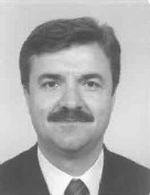
MINKO GERDZHIKOV
(30.06.2005 – 12.11.2005)
Minko Gerdzhikov was born in 1955. He earned a Bachelor’s degree in Finance and Credit. He worked at Bulstrad AD and then at the Ministry of Foreign Trade. In 1987-1991 he was the trade representative of the Republic of Bulgaria in Athens. In St.Sofiyanski’s caretaker government in 1997 occupied the positon Deputy Minister of Trade and Foreign Economic Relations. At present he is the Deputy Mayor in charge of Finance, Economic Activity, European Programmes and Projects at the Sofia Municiplality. The solving of one of the major issues of Sofia began in the period, when М.Gerdzhikov was Mayor of Sofia. The landfill in Suhodol, causing serious social tension, was closed. Several bale-making machines for household waste were purchased and installed in Kremikovtsi, Novi Iskar and in the area between the Trebich District and the Village of Mramor. The Waste Management Programme of Sofia was adopted. Sofia Municipality continued the construction of the Sofia Subway. Gerdzhikov was the central figure at the groundbreaking ceremony for the construction of the 1st metro line in the section between Intepred and Mladost. A new set of engine and train cars were purchased and commissioned. The tram line between the Monument of Vasil Levski and the Sofia Theatre was refurbished. All the tram switches were replaced. Due to the frequent accidents in Knyazhevo District, certain efforts were made to resolve the issues with the heavy traffic and trucks, passing through the district. Measures are undertaken against a part of the illegal Roma ghettos in Slatina District and Hristo Botev Area. They were removed and some of their residents returned to their hometowns. Sofia Municipality helped provide and distribute financial support to the residents of Novi Iskar most severely affected by the floods. Emergency repairs and cleaning of the rivers in the affected areas were carried out. М.Gerdzhikov opened the first municipal home for elderly and immobile people in Mladost 3, which was part of Municipality’s measures to support the disadvantaged. Sofia submitted its candidacy for hosting the Winter Olympic Games. М.Gerdzhikov and I. Krasteva – acting Chairperson of the Bulgarian Olympics Committee signed a “Procedure for Receiving the Candidates for the Winter Olympics in 2014”
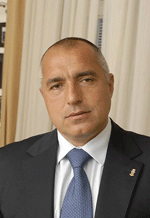
BOYKO BORISOV
(2005 – 2009)
He was born in Bankya in 1959. He graduated at the Higher School of the Ministry of Interior as a lieutenant. In 2001 he was appointed Secretary General of the Ministry of Interior and promoted to “Colonel”, and in 2002 – to “General Major”. Mr. Borisov won the partial mayor’s elections as an independent candidate and in 2005 became the Mayor of Sofia. The repairs and public works, initiated by the Sofia Municipality were related to the reconstruction and refurbishment of streets and boulevards, such as “Bulgaria”, “Madrid”, “Tsar Boris III”, “Tsarigradsko Shose”, etc. “Al. Stamboliyski” Blvd. was partially refurbished. The Southern Arc of the Sofia Ring Road was refurbished, expanded and commissioned. “Opalchenska” street was also refurbished and expanded in the section between “Stamboliyski” and “Slivnitsa” boulevards. The project for the construction of the first subway line from the centre of Sofia to Mladost district continued. At that time began also the construction of the second subway line – from Hladilnika District to Nadezhda District. One of the more significant events, during Boyko Borisov’s term of office was the adoption of the General Development Plan of Sofia. A programme for separate waste collection was initiated with the support of the municipality and the involvement of Ecobulpack. The Mayor initiated the investigation of options for the construction of a modern household waste-treatment plant. Mayor Borisov opened a social centre “Mother and Infant” for supporting single mothers, constructed within a joint project with the Ministry of Labour and Social Policy. The issues at Toplofikatsia Sofia AD /District Heating Company/ forced the Municipality to transfer its share and the company became fully state-owned. Series of steps were undertaken to renovate the public transport fleets by purchasing new trams and buses. The so-called GPS public transport control system was introduced for the first time in Bulgaria. It included the installation of electronic information boards at some of the public transport stops. Electronic charging systems were installed in the trams. The Ariana Lake was refurbished and the largest ice-skating rink on the Balkans started operating there every winter. The activities, related to ensuring access to municipal facilities for the disabled continued. Initiatives for cooperation with the mayors of a number of European capitals were launched. The Ordinance on the Public Order in Sofia was adopted for protecting the public order and preventing crimes and abuse. The Municipality organized cultural events, such as: concerts of world-famous singers and bands, art exhibitions, celebrations of events of local or national significance, as well as sports events. Sofia Municipality worked on projects, funded within international programmes in the area of construction, sports, education, environment, etc. The Sofia Municipality Management and Development Programme for the Period 2008-2011 was adopted, providing for various economic, social, utility and cultural initiatives and events and activities to the benefit of the over one million residents of Sofia.






